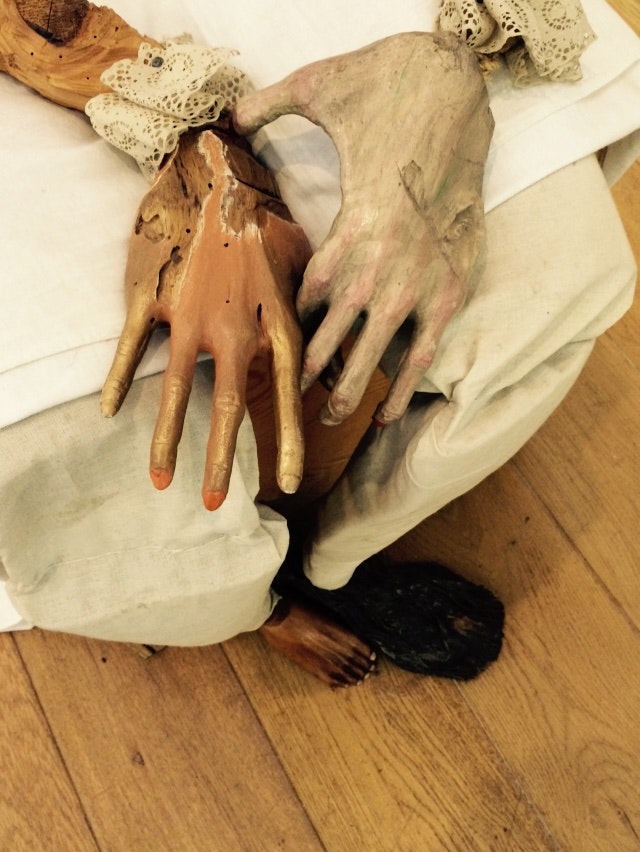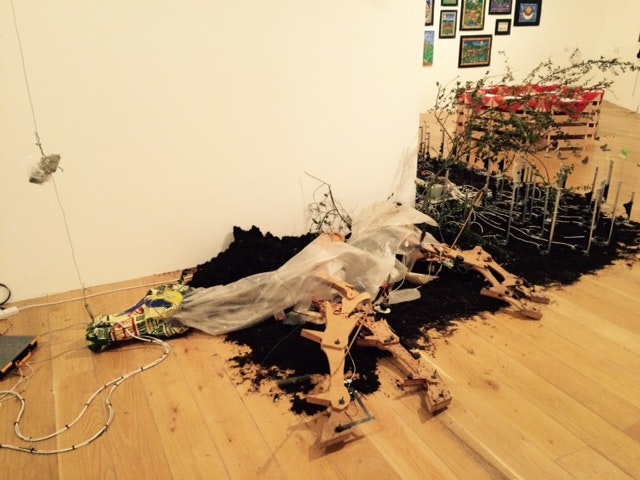Rights of Nature: Art & Ecology in The Americas
Nottingham Contemporary
'Runaway global warming, environmental destruction and mass species extinction are all consequences of our fraught relationship with nature. Earth has been seen as an infinite supply of natural resources to be freely exploited for profit. Climate change caused by human behaviour has placed all life on the planet at risk – including our own.
The artists in this exhibition reflect on our current environmental crisis – economic, political and cultural, as well as ecological. The rights of nature to flourish free from human destruction are increasingly recognised in new environmental laws. Bolivia and Ecuador have recently enshrined the rights of Mother Earth in their legal systems.
Rights of Nature exposes how this European idea of human mastery of the planet was imposed on the Americas. In contrast, new forms of resistance are inspired by, and linked to, indigenous cultures that see themselves as part of an ecological continuum. The exhibition reveals how contemporary art is contributing to the global project of rethinking our relationship to other living things.' Nottingham Contemporary
This exhibition offered not only visually interesting artefacts and images but also a clear environmental message. It sought to make viewers think and address their own ideas about our relationship with nature as part of a destructive human centric society. Art has the power to stage issues in new and engaging ways and its always refreshing to witness modern art which seeks to benefit society without diluting the quality of the art or coming across as patronising or preachy.

The piece for me which really stood out was Fernando Palma Rodriguez's 'Do you like what happens in milpa Alta'. This piece deals with ecological issues in his home town of Alta. It features a kinetic horse sculpture lying on a bed of scattered earth. The sculpture is hooked up to many cables and controlled by electronics and air pistons. The many cables are intertwined with the soil, they are a feature of the piece and not hidden but instead emphasised. The mechanisms are in fact quite overpowering and the way this horse is hooked up to wires and cables quite disturbing. The horse form is constructed from a mixture of carved wood and rubbish. The legs are beautifully shaped our of wood and the head carefully formed from brightly coloured recycled aluminium cans. The body however is loosely formed by a large polythene bag which appears to suffocate the creature and cover the otherwise beautiful sculpture. The movement sees the head reach up, struggle and sink back down,hinting at a sense of pain and suffering. A single leg seemingly shot with a plastic arrow twitches and pads. Other subtle motions such as the twisting of the ears, all come together to give this object life.
Next to the horse is a forest of Butterfly's, wobbling and flapping in an invisible wind, powered again by mechanical pistons. A mix of the pretty in their delicateness and ugly in their mechanical setting, they are made of the same coloured recycled metal. In this piece their is life and death mixed together, stillness and movement. The mechanical sounds of the controls provides a soundtrack, a humming and creaking backdrop. There is stiffness in the mechanical movement, which represents a struggle between the natural and the man-made. Between mother earth and a human society.
This is an artwork people stop and watch. They watch the changing movement to see the repeating cycle and potential. I also believe they are captivated by the character, seen in the horse and the life given through the kinetic mechanics which create almost the life of a puppet. Does it make us think deeper I wonder?
This work is a kinetic sculpture rather than a performance in a gallery rather than a theatre and yet it seems to link incredibly well to my current area of critical practise. This seems to be a successful use of a character, an object given life to make us stop and watch, to think, to imagine to a deeper extent than an image might provide.


Another piece in the exhibtion which caught my attention was 'la Malinche' by Jimmie Durham
Malinche was a Mexican woman given to the Spanish 1519, who played a role in the Spanish conquest of the Aztec empire. The sculptural figure was cleverly placed looking directly at the door to face you as you enter. It was of a primitive folk in style, which at first glance might sit well in a museum and yet on closer inspection was infact a mixture of the old and new. On the clothes rail type stand a was modern bra, against the natural colour palette brightly coloured plastic beads. There was also a mix of nature and man-made with tree branch back but man made shoulders, a carved foot and a bark foot, snake skin face to one side, skin to the other. Her deep glistening eyes, draw in an audience and the reflective quality catches the light to give both life and a teary sadness. The joints of the figure are like those of a puppet but motionless, but with that there seems a potential for movement at any time.



Other structures by Jimmie Durham, similarly mix the modern and traditional, human and machine including the piece entitled Cortez. A much more sinister and demanding character, less human than machine. Again the wheels and joints give the sense this thing could move and come to life.



